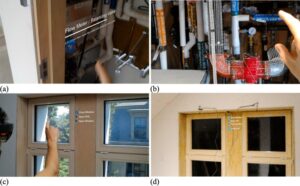Newly-published research explains IoT applications in data-driven Harvard HouseZero™
CAMBRIDGE, Mass., July 6, 2023 – A newly-published article in the journal Energy & Buildings is detailing how the Harvard HouseZero™ Internet of Things (IoT) architecture is crucial not only for maintaining proper ventilation, heating, cooling, and lighting within the building, but also for the array of leading edge, data-driven experimentation – from basement to rooftop – within the transformed residential structure at 20 Sumner Rd.

“HouseZero™, the living laboratory and headquarters for the Harvard Center for Green Buildings and Cities (CGBC), was specifically designed with two overlapping networks. One network serves to operate the building, and the other facilitates research and experimentation,” said Ali Malkawi, Founding Director of the CGBC and co-author of the new paper. “Data is essential for understanding building performance and for programming algorithms to better control building operations. HouseZero™ infrastructure networks allow us to operate our building, study its behavior, and develop, test, and deploy such data-driven algorithms.”
In the paper, researchers from the CGBC at the Harvard Graduate School of Design (GSD) describe the IoT architecture that allows HouseZero™ to operate automatically and meet its ambitious energy efficiency goals. Compared to other smart buildings, the structure’s IoT architecture is unique because it consists of parallel systems; one system is dedicated to daily building “operation” and another is for the myriad “research” projects underway.
“The research team can experiment with customized data-driven algorithms in one zone, multiple zones, or in the entire building due to the two-system structure of the IoT architecture. This structure ensures there’s no disruption to the building’s regular functioning. Many of our ongoing experiments utilize this architecture,” said Xu Han, Research Associate at the CGBC and co-author of the paper.
Some of these applications include developing and testing data-driven algorithms in physical and virtual test beds, analyzing and improving the building’s performance through a data-informed building energy management (DiBEM) framework, and using augmented reality (AR) to enhance the visualization and management of building facilities.
“We are excited by the progress we have made in our research using HouseZero™ IoT architecture, and we look forward to harnessing this architecture to promote energy efficiency well beyond our walls throughout the building industry,” said Malkawi.
